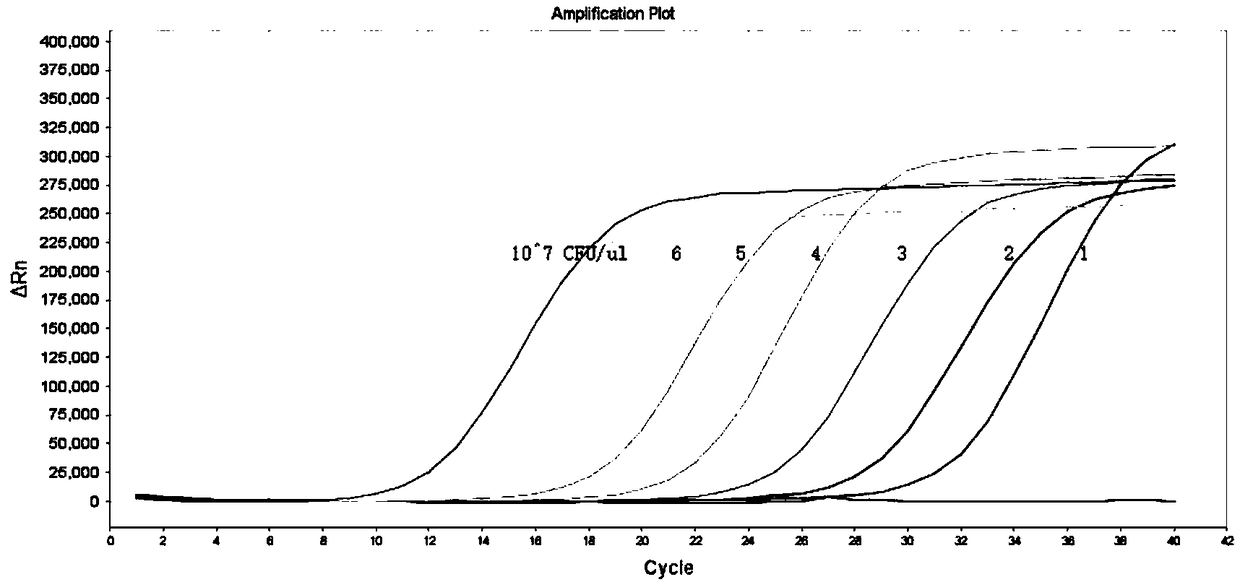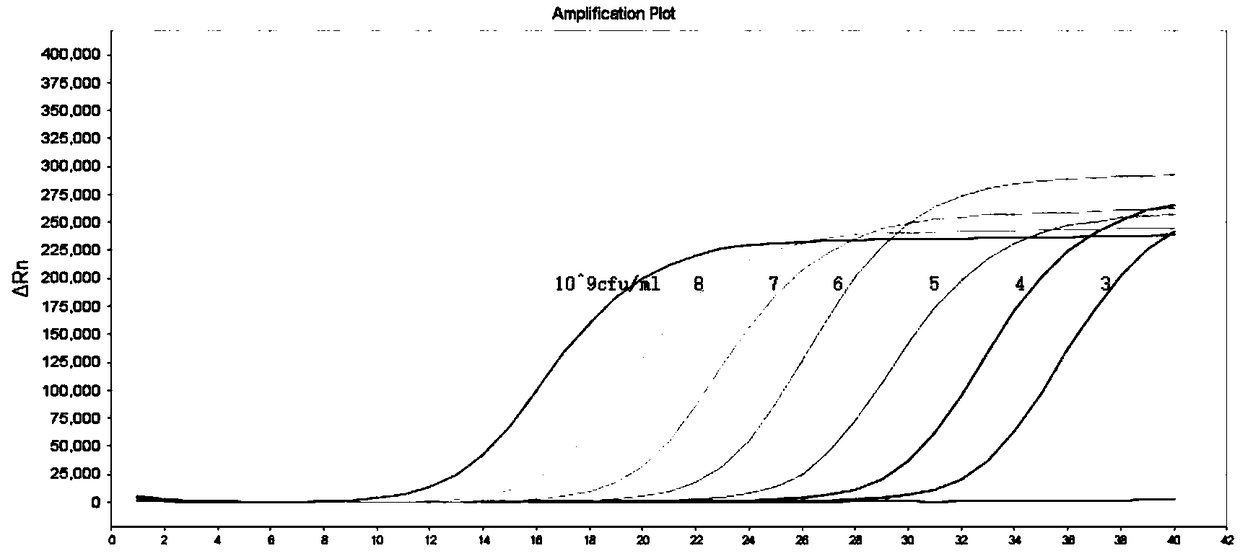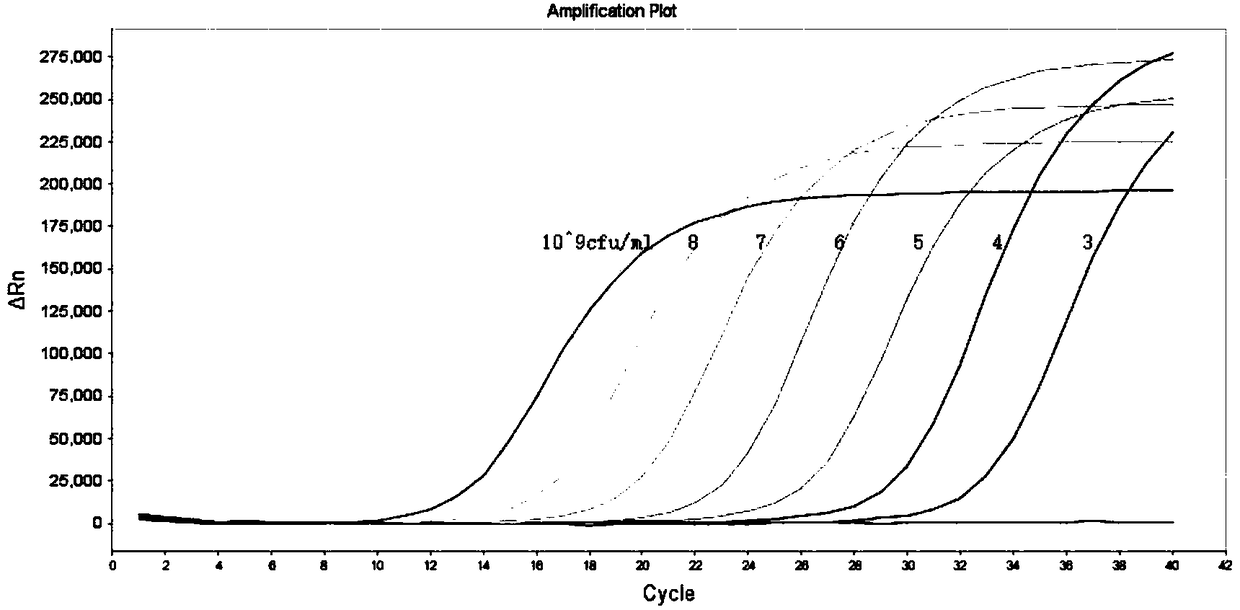Detection kit of 16 food born pathogenic bacteria
A food-borne pathogen and detection kit technology is applied in the fields of biotechnology and pathogen detection, which can solve the problems of inflexible detection methods and inconvenient operation.
- Summary
- Abstract
- Description
- Claims
- Application Information
AI Technical Summary
Problems solved by technology
Method used
Image
Examples
Embodiment 1
[0109] Example 1 Optimization of amplification system, taking Salmonella as an example
[0110] 1. Primer concentration optimization
[0111] In the PCR system, too high a primer concentration may cause mismatches and lead to non-specific amplification, while too low a concentration will affect the generation of PCR products, so it is necessary to optimize the primer concentration. In the experiment, we set 3 different primer concentrations, using plasmid bacteria (1×10 5 CFU / ml and 1×10 3 CFU / ml) and negative control are used as the test samples, the template dosage is 5μl, and the final volume of each reaction system is 25μl, to detect the amplification difference of different concentrations. When the primer concentration is low, the amplification efficiency is slightly worse, and the fluorescence response intensity is also low. When the amount of invA gene primer (10μmol / L) is 0.5μL or more, there is no significant difference in amplification efficiency. Considering comprehens...
Embodiment 2
[0123] Example 2 Operational specification for detection of food-borne pathogens
[0124] 1. Sample preparation in the sample processing area
[0125] 1.1 Food specimen: select 1g of suspicious food, place it in a centrifuge tube containing 1ml of saline, invert and mix 3 times, let it stand for 2 minutes, transfer the supernatant to another centrifuge tube, and centrifuge at 12,000 rpm for 2 minutes. The supernatant is removed and the pellet is used for sample nucleic acid extraction.
[0126] 1.2 Food culture specimens: The food samples are enriched in broth medium for 6 hours, 1ml of enrichment liquid is taken, centrifuged at 12,000 rpm for 2 minutes, the supernatant is discarded, and the precipitate is used for sample nucleic acid extraction.
[0127] 1.3 Stool specimen: Pick about 0.2g of feces (take the mucus, pus and blood part as much as possible) and place it in a centrifuge tube containing 0.5ml of normal saline, shake and mix well, and centrifuge at 12,000rpm for 2 minutes....
PUM
 Login to View More
Login to View More Abstract
Description
Claims
Application Information
 Login to View More
Login to View More - R&D
- Intellectual Property
- Life Sciences
- Materials
- Tech Scout
- Unparalleled Data Quality
- Higher Quality Content
- 60% Fewer Hallucinations
Browse by: Latest US Patents, China's latest patents, Technical Efficacy Thesaurus, Application Domain, Technology Topic, Popular Technical Reports.
© 2025 PatSnap. All rights reserved.Legal|Privacy policy|Modern Slavery Act Transparency Statement|Sitemap|About US| Contact US: help@patsnap.com



